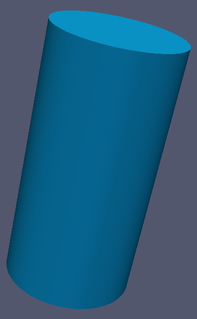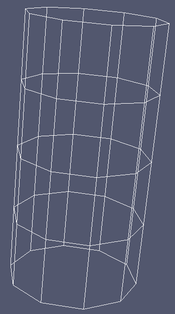Version: 8.3.0
This section covers at a very high level the concepts used overall in the MED world. More precise definitions can be found in the Glossary, concepts and definitions, or in the dedicated pages for the meshes and the fields.
Many physical simulation codes (try to) solve a given set of equations on a given geometrical domain. This domain can be anything from the representation of a building to the description of the molecular network found in a small piece of concrete.
The geometrical domain is provided to the machine as a CAO modelisation (what you can build with the GEOM module of SALOME for example).

The numerical codes (e.g. FEM-based codes) are usually unable to work directly with such a format, and a spatial discretization of the domain has to be performed: the meshing. A mesh can hence roughly be seen as a discrete version of a continuous input geometry. The module SMESH in SALOME is typically dedicated to performing this task.

A mesh is made of cells (the elementary spatial unit), which are typically simple polygons or polyhedrons.
On this support, the code can read/store values in form of a field. A field is hence an array of data, where each cell (or node, or ... etc) has one (or more) values associated to it. A code simulating the heat equation will for example produce a temperature field assigning a single temperature value to each cell of the mesh.
Taking the vocabulary of the finite-element world, a field with values stored at the cell level is often called a P0 field, and a field where values are stored at node level a P1 field.
More on this subject:
When working with different codes, or when coupling codes, it is often the case that the initial problem has been modelised in two different ways. For example a thermic code might use a mesh made of tetrahedron and a CFD code might use a mesh made of hexaedrons. The interpolation mechanisms provided in the MED library allow the user to easily transfer field data from one representation to the other.
In all its generality it is a complex task, covering many different use cases (do the two meshes overlap? do we want to conserve the total amount represented by the field?, etc...), justifying a dedicated section in the documentation: Interpolation
In this documentation you will sometime read the words "projection", or "transfer" or "interpolation" for this process.
More on this subject: